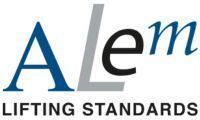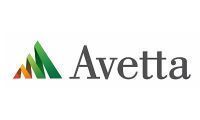- DHL Back in Action: Stertil Stokvis Engineers Complete Critical Dock Leveller Repair
- Wheel Guide Damage: Why It Happens And How To Avoid It
- How To Avoid The Hidden Costs Of Damaged Industrial Doors
- Dock Bumper Overrides: How To Container-Proof Your Loading Bay
- Loading Bay Maintenance: How to Comply with PUWER Regulations
- How Are Loading Bay Dock Levellers Maintained?
- Stertil Stokvis Loading Bay Door Repair Restores Operations After Forklift Collision
How Are Loading Bay Dock Levellers Maintained?
24/10/24 | News 2024
Dock levellers are vital to the seamless operations of loading bays.
But neglecting their maintenance can lead to various risks, including safety hazards, increased downtime, and even legal implications if accidents occur.
Here’s what you need to know about maintaining dock levellers:
TESTING THE ELECTRICS
Safety is crucial when servicing dock levellers.
That’s why before starting any inspections, you should raise the dock leveller, insert maintenance props or pins, and ensure that the hydraulic pressure is released.
Then isolate the leveller using Lockout/Tagout (LOTO) procedures for safe maintenance – this prevents other workers from attempting to use the equipment during maintenance.
The control box can then be cleaned, ensuring that the enclosure remains in good condition.
What else should be inspected?
1. Visually inspect electrical wiring and connections.
2. Test all electrical devices, including emergency stop functions, to confirm they are in efficient working order.
3. Ensure proper earth bonding to the main structure of the dock leveller.
After these steps, dock leveller maintenance can then move onto the next stage:
CHECKING HYDRAULICS
Hydraulic systems power the lifting and lowering mechanisms, allowing the leveller to adjust to different vehicle heights safely and efficiently.
But they need to work in a controlled and precise way. If not properly checked, faulty hydraulics can lead to issues like:
- Difficulty in raising or lowering the platform
- Uncontrolled movements
- Loss of stability when in raised position
That’s why it’s crucial to check hydraulic components such as pumps, cylinders, and hoses, ensuring they work well together.
Inspecting hydraulics properly involves the following:
1. Inspect hoses and connections - look for damage or leaks, and replace any faulty components to prevent further issues.
2. Check and top-up hydraulic fluid - ensure the hydraulic pump reservoir is filled with the correct grade of oil as recommended by the manufacturer.
3. Clean and lubricate - clean the hydraulic pump unit and cylinder bodies, and lubricate pivot points to ensure seamless operation.
INSPECTING STRUCTURE AND MECHANICS
A dock leveller’s structure, including the base frame, top platform, and welded joints, must be in good condition to handle the repeated impact and weight of vehicles and loads.
But over time, wear and tear, heavy loads, or accidental impacts can cause cracks, bent components, or broken welds.
These structural issues can weaken the dock leveller, potentially leading to sudden failures or collapses during use.
To check structure integrity, it’s important to visually inspect the base frame, top platform, and any welded joints for signs of deformation or impact damage.
What about the leveller’s mechanics?
Equally important are the mechanical parts of a dock leveller, such as hinges, pivot points, and bearings.
If these components are worn, rusted, or damaged, they can cause friction or stiffness, making it difficult for the dock leveller to operate properly.
Key steps include:
1. Examine the rear ramp hinges for wear or damage and lubricate them regularly. Report any signs of excessive wear or damaged welds on the underside of the ramp or subframe.
2. Clean lip pins and maintain pivot points. For telescopic lip levellers, ensure that the nylon guide rollers are moving freely.
3. Inspect the toe guards for proper function and lubricate pivot points to ensure smooth movement.
Regularly inspecting the mechanics and structure ensures that the equipment remains safe, reliable, and compliant, while preventing unexpected breakdowns and reducing operational costs in the long run.
OPERATIONAL CHECKS
Once maintenance is complete, it’s important to verify that all systems are working correctly before returning the dock leveller to service:
- Remove maintenance props or pins and refit them into their storage clips.
- Remove LOTO from the control box power supply isolator and restore power supply.
- Operate the dock leveller through a full cycle to ensure it is functioning as expected. Check the rate of descent of the ramp with the lip fully extended, and adjust the throttle valve if necessary, referring to the manufacturer's manual for specific adjustments.
REPORTING AND DOCUMENTATION
Maintaining accurate records of all inspections is crucial for compliance.
Not only is this good practice - ensuring that any defects or safety concerns are documented and addressed - but it is also a requirement under the PUWER regulations and advised by industry bodies such as ALEM.
Some loading bay maintenance specialists can offer added value with Traffic Light Condition Reports, highlighting the status of each component to ensure transparency and safety for your business.
SOURCING A MAINTENANCE SPECIALIST
Servicing dock levellers requires experience and expert knowledge of the equipment.
It’s also necessary for a ‘competent person’ under the PUWER regulations to perform maintenance checks.
While this article is intended for information purposes only and serves as a guide, dock leveller maintenance should always be carried out by a qualified professional.
At Stertil Stokvis UK, our experienced team is here to help with all your dock leveller servicing needs.
So if you’re looking to ensure the longevity and reliability of your equipment, reach out today to schedule a maintenance visit and keep your operations running smoothly.
Contact Stertil Stokvis on 0870 770 0471, option 2, option 4, or email helpdesk@stertil.co.uk.






